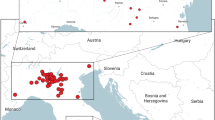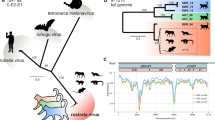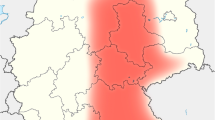Abstract
DURING intermittent investigations of encephalitis of horses and donkeys in Egypt and Syria, spread over the past six years, we have isolated from infected equines and other hosts twenty-three strains of virus which, in respect of pathogenicity for laboratory animals and other characters so far determined, are indistinguishable. The equine disease, which is apparently carried by arthropods, conforms broadly to earlier descriptions of equine encephalomyelitis in the Middle East1–3; and, recently, we have recognized three outbreaks of encephalitis in sheep and one in cattle from each of which strains of virus, indistinguishable at this stage from the equine strains, have been isolated.
This is a preview of subscription content, access via your institution
Access options
Subscribe to this journal
Receive 51 print issues and online access
$199.00 per year
only $3.90 per issue
Buy this article
- Purchase on Springer Link
- Instant access to full article PDF
Prices may be subject to local taxes which are calculated during checkout
Similar content being viewed by others
References
Shirlaw, J. F., J. R.A.V.C., 2, 40 and 75 (1940).
Pattison, I. H., J. Comp. Path. and Therap., 55, 109 (1945).
Razza, F., and Carusillo, G., Revist. Med. Vet. Zootech., Parma, 1, 331 (1949).
Beller, K., and Bieling, R., “Viruskrankheiten”, Part 2, 175 (Leipzig, 1950).
Author information
Authors and Affiliations
Rights and permissions
About this article
Cite this article
DAUBNEY, R., MAHLAU, E. Near-Eastern Equine Encephalomyelitis. Nature 179, 584–585 (1957). https://doi.org/10.1038/179584a0
Issue Date:
DOI: https://doi.org/10.1038/179584a0
Comments
By submitting a comment you agree to abide by our Terms and Community Guidelines. If you find something abusive or that does not comply with our terms or guidelines please flag it as inappropriate.



